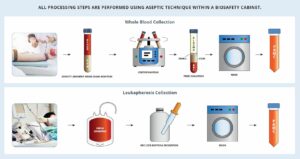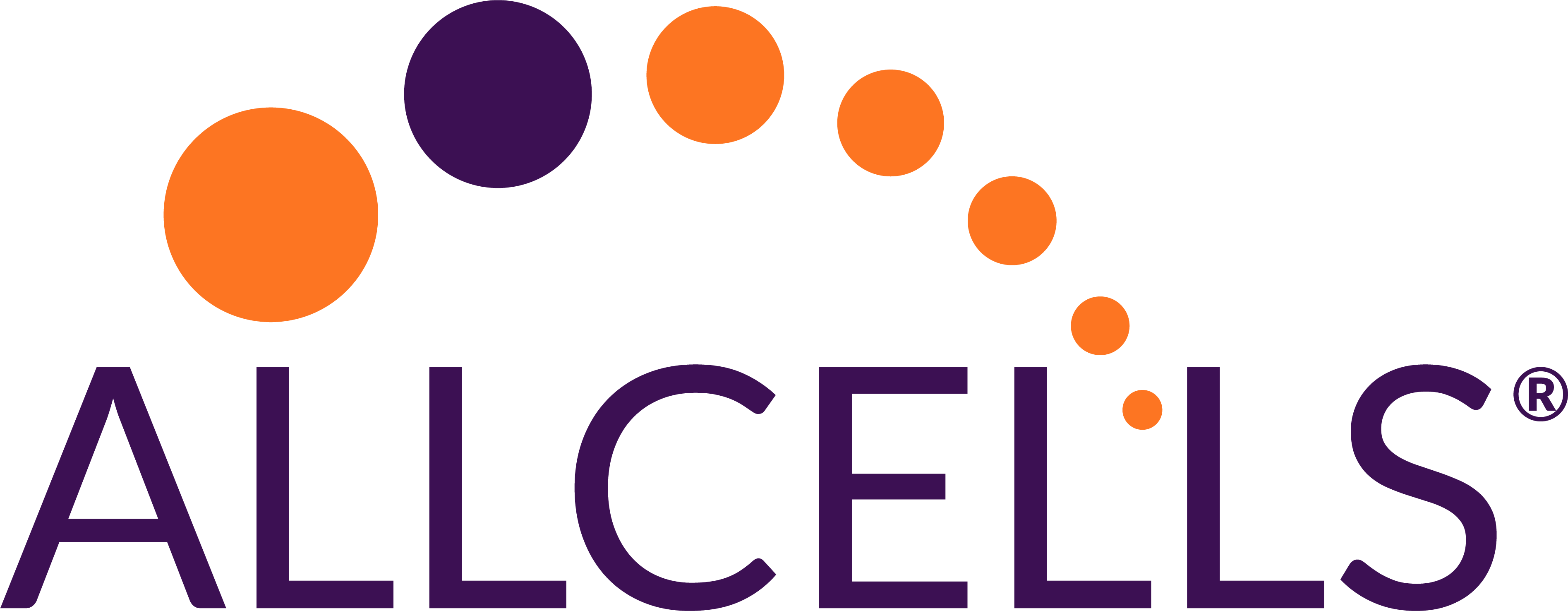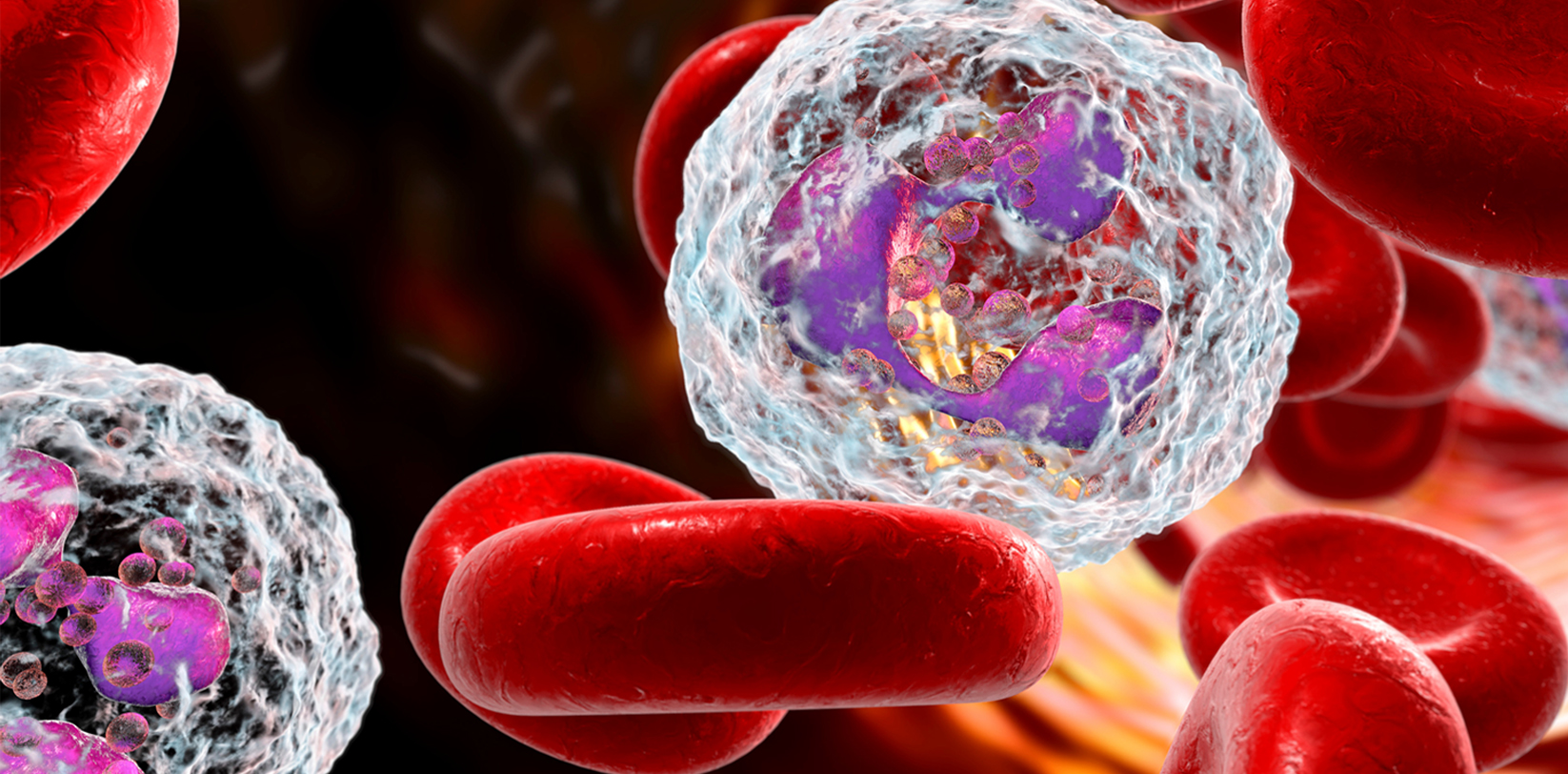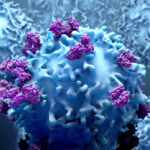PBMCs: A powerful research tool

What are PBMCs?
Human peripheral blood mononuclear cells (PBMCs) are key components of the body’s complex and dynamic immune system. A mononuclear cell is characterized by a single round nucleus and includes lymphocytes, monocytes, and dendritic cells. These cells have important immunological roles defending the body from infection, cancer, and other foreign invaders, making them ideal specimens to study immunological responses. Lymphocytes (T cells, B cells, and NK cells) make up the majority of the PBMC population, ranging from 70-90%, followed by 10-30% monocytes with a small percentage of dendritic cells (1-2%). The relative distribution of these cell populations may vary based on attributes like age, ethnicity, or gender. Some key applications of PBMCs in preclinical research include:
- Immunological studies (i.e. autoimmune disease modeling and treatment1)
- Vaccine development2
- Toxicity screening3, drug discovery4
- Biomarker identification5
- Cancer immunotherapy (i.e. transplantation6, CAR-T cell therapies7)
- Regenerative medicine8
Thus, PBMCs serve as a powerful platform for a wide spectrum of research and clinical applications.
PBMC Isolation
PBMCs can be isolated either from whole blood or from a type of apheresis called leukapheresis.
The method for mononuclear-cell isolation from whole blood was first developed by Bøyum9 in 1968 based on the principle that different cell types have different densities. In order to separate PBMCs from other blood components, blood is layered over a density-gradient medium, such as Ficoll, and centrifuged to allow cells to separate according to their density. This density-gradient medium organizes cells in the following order: a top layer of plasma, followed by an opaque, white layer of PBMCs, a fraction of polymorphonuclear cells (such as neutrophils and eosinophils), and finally a bottom layer of erythrocytes. The PBMCs in this so-called “buffy coat” layer can be gently removed by pipetting. The isolated PBMCs can then be washed in culture medium or phosphate-buffered saline to remove residual density medium and any remaining platelets. While this method is quick, it may result in a PBMC isolation that is contaminated with undesired cellular material from adjacent layers.
Apheresis is a process where blood taken from a donor is passed through a machine that allows the desired blood component to be collected while the remainder of the blood is returned to the donor’s circulation. Leukapheresis is a specialized apheresis modification that collects leukocytes or white blood cells from whole blood, removes lymphocytes and returns the remaining cells (i.e. granulocytes, platelets, erythrocytes) and plasma to the donor. Leukapheresis results in higher purity and significantly higher PBMC content per volume than buffy coat collection, which is critical for applications requiring a high yield and purity of PBMCs.
AllCells PBMC Products
The study of PBMCs can provide insight into immunological mechanisms that are of huge benefit to the scientific and medical research fields. The ability to purchase these cells from reputable suppliers has made them more accessible than ever. AllCells is the industry-leading supplier of high-quality blood and bone marrow-derived primary cells. From donor collection, lab processing to packaging, AllCells’ state-of-the-art facilities make it possible to obtain the highest viability, purity, and cell counts, available in the shortest amount of time to maximize product freshness. Peripheral blood cells are collected through venipuncture or apheresis from healthy donors.
PBMCs isolated from whole blood by density-gradient separation to remove granulocytes and red blood cells (RBCs) are available in fresh and cryopreserved formats for researchers. Alternatively, for workflows requiring a large number of MNCs, AllCells offers PBMCs isolated from Leukapheresis Packs (Leukopaks) using the Spectra Optia® Apheresis System. This industry-leading apheresis, cell-processing, and cell-collection system use continuous-flow centrifugation and optical detection technology to collect white blood cells. The leukapheresis material is then treated with ammonium chloride to remove red blood cells (RBCs) and washed to remove platelets, effectively isolating the PBMCs. By performing consistent, high-quality bulk PBMC isolations from a single donor, not only saves you time and money but allows for comparative analyses over time. Additionally, unencumbered access to PBMCs from different donors can facilitate the evaluation of population differences in the molecular responses, important in toxicological studies, or evaluating the efficacy of therapeutic agents.

PBMCs available in fresh and cryopreserved formats, isolated from whole blood or Leukopaks, are collected in AllCells’ on-site collection facilities from a diverse pool of IRB-consented, healthy donors in accordance with strict quality protocols. AllCells immediately processes fresh tissue in our adjacent labs to produce purified cell types with unparalleled quality and consistency. PBMCs are a more representative cellular platform compared to mouse models or human cell lines, which have limitations in predicting in vivo responses restricting their direct clinical translation. Their relative ease of isolation from human blood and access through reputable suppliers make PBMCs ideal to address a variety of biological questions. PBMCs have been studied for more than 50 years and will continue to be integral tools for immunological research.
To order PBMCs in bulk, visit our Leukopak product page.
Footnotes
- Tuller T, et al. (2013). Common and specific signatures of gene expression and protein-protein interactions in autoimmune diseases. Genes Immun., 14(2): 67-82. doi:10.1038/gene.2012.55
- Tapia-Calle, G., et al. (2019). A PBMC-Based System to Assess Human T Cell Responses to Influenza Vaccine Candidates In Vitro. Vaccines, 7(4): 181. doi:10.3390/vaccines7040181
- Martínez-Rodríguez NL, et al. (2019). In vitro toxicity assessment of zinc and nickel ferrite nanoparticles in human erythrocytes and peripheral blood mononuclear cell. Toxicol In Vitro., 57:54-61. doi:10.1016/j.tiv.2019.02.011
- Eriksson A, et al. (2015). Drug screen in patient cells suggests quinacrine to be repositioned for treatment of acute myeloid leukemia. Blood Cancer J., 5(4):e307. doi:10.1038/bcj.2015.31
- Wong, Laiping et al. (2016). Limits of Peripheral Blood Mononuclear Cells for Gene Expression-Based Biomarkers in Juvenile Idiopathic Arthritis. Scientific reports, 6: 29477. doi:10.1038/srep29477
- Li XY, Liang ZH, Han C, et al. (2017). Transplantation of autologous peripheral blood mononuclear cells in the subarachnoid space for amyotrophic lateral sclerosis: a safety analysis of 14 patients. Neural Regen Res., 12(3):493-498. doi:10.4103/1673-5374.202918
- Hartmann J, et al. (2017). Clinical development of CAR T cells-challenges and opportunities in translating innovative treatment concepts. EMBO Mol Med., 9(9):1183-1197. doi:10.15252/emmm.201607485
- Beer L, et al. (2016). Peripheral blood mononuclear cell secretome for tissue repair. Apoptosis, 21(12):1336-1353. doi:10.1007/s10495-016-1292-8
- Bøyum, A (1968). Isolation of mononuclear cells and granulocytes from human blood. (Paper IV). Scand. J., Clin. Lab. Invest. 21 Suppl, 97: 77–89.




